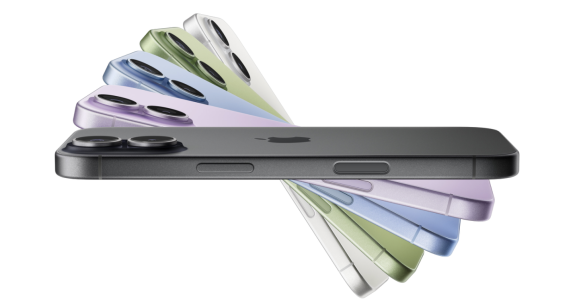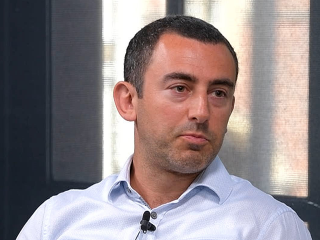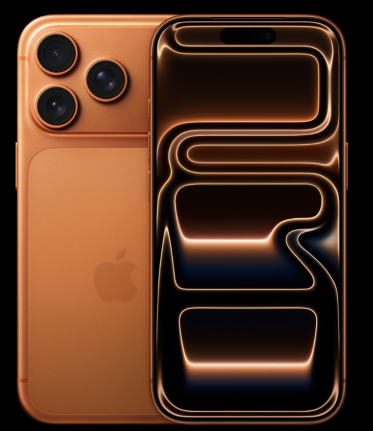Physical Address
304 North Cardinal St.
Dorchester Center, MA 02124
Physical Address
304 North Cardinal St.
Dorchester Center, MA 02124
Apple has unveiled its latest iPhone line-up, headlined by the ultra-thin 17 Air, in a move analysts say will not only reinvigorate interest in its flagship devices but also accelerate the global adoption of eSIM technology.
The announcement, made at Apple Park in Cupertino, marks the first time Apple has placed such a strong emphasis on design differentiation in years. The iPhone 17 range is being positioned as both a style statement and a catalyst for broader industry shifts.
eSIM goes global
The most significant shift, however, is Apple’s decision to make the iPhone 17 Air eSIM-only worldwide. Having already phased out the physical SIM tray in the US, Apple is now extending the change across multiple markets.
“Apple is doubling down on eSIM with the iPhone 17 Air. Having established the eSIM-only iPhone as the default offering in the US, it is now pushing this technology around the world,” said Ben Wood of CCS Insight.
He noted that Apple’s track record suggests its decisions quickly set industry standards. “As we’ve seen numerous times in the past, when Apple embraces a new approach for example, removing the 3.5mm headset jack, others follow. In the case of eSIM, network operators need to support the technology. Apple claims there are already at least 500 networks that support eSIM. For those that don’t, there will be a mad panic to implement the capability as soon as possible.”
According to CCS Insight forecasts, 377 million smartphones shipped with eSIM support in 2024, accounting for 31% of all global shipments. iPhones represented half of this total. By 2030, the firm expects 843 million smartphones will feature eSIM, or 69% of the market.
Slimmer design rekindles interest
Paolo Pescatore, technology analyst at PP Foresight, said the new line-up looks well-positioned to appeal to multiple customer segments.
“The new and much-improved iPhone line-up looks impressive, which puts it in a strong position to cater for different segments. Significantly, there is an iPhone for everybody at a reasonable price,” he said.


According to Pescatore, Apple’s strategy to slim down the device mirrors moves made in other parts of its portfolio and could set the stage for bigger form factor changes in future.
“A slimmer and lighter iPhone makes perfect sense, taking a proven strategy across from other product lines. It now paves the way for Apple to launch a foldable device further down the line,” he said.
Wood agrees the design refresh represents a critical turning point.
“It has been a few years since Apple has had new iPhones that you could put on the table in a coffee shop, meeting room or pub, and people would ask, ‘Is that the new iPhone?’ With the iPhone 17 Air and the redesigned iPhone 17 Pro models, Apple is delivering products that will create renewed interest,” he said.

He says the iPhone 17 Air could play an important role in drawing consumers back into retail stores. “The iPhone 17 Air feels differentiated enough that people would consider visiting a store to see it in person. This presents an opportunity for operators and retailers to tempt users into an upgrade purchase, often with the lure of an attractive trade-in offer, given the substantial residual value of older iPhones,” he said.
“The iPhone 17 Air feels differentiated enough that people will consider visiting a store to see it in person. This does not necessarily mean they will purchase this specific model in the line-up, but it presents an opportunity for operators and retailers to tempt users into an upgrade purchase, often with the lure of an attractive trade-in offer, given the substantial residual value of older iPhones. This is very valuable at a time when people are holding onto their smartphones for longer than ever”.

Pro models critical
While the Air may grab attention for its sleekness, analysts highlighted the enduring profitability of the Pro range.
“The update to the iPhone Pro models is significant. They are the most profitable part of Apple’s iPhone portfolio, and CCS Insight research shows that in mature markets like Western Europe and the US, more than 40% of Apple users have a Pro model,” said Wood.
Although Apple has raised the price of the Pro variant, all other models remain flat in dollar terms – a sign, Wood argues, of the competitive intensity of the smartphone market and Apple’s determination to keep pressure on Samsung and other rivals.
“This is quickly gathering momentum, and with Apple now offering the iPhone 17 Air with eSIM support only, we expect the trend to accelerate,” said Wood.
Broader ecosystem bets
Alongside the new phones, Apple introduced the AirPods Pro 3, which Pescatore described as “a massive upgrade” with real-time translation capabilities. “People prefer to use an audio device rather than a watch, and some of the new features further strengthen Apple’s offering,” he said, adding that health and fitness remain central themes across the ecosystem.
“These other devices may not grab the headlines, but they serve as a key means to further integrate Apple into people’s lives through their existing phones and upgrade cycles,” Pescatore noted.
Holiday season boost
Both analysts believe the refreshed line-up will provide momentum into the crucial holiday shopping period.
“Ultimately, this new device will bring a sense of newness to the iPhone, which has remained the same for too long. This in itself provides excitement among Apple’s loyal core iPhone base, which will still sell millions,” said Pescatore.
IDC analysis Francisco Jeronimo says the strategic positioning of the iPhone 17 Air sees a parallel with the launch of the MacBook Air in 2008 and the iPad Air in 2013,
“This new product targets a specific market segment that prioritises aesthetics, in-hand comfort, and portability over maximum camera capabilities or longer battery life. This product aims to improve sales in the segment between the standard version and the Pro Max version, as the Plus was never able to establish itself as a strong sales performer, being outperformed most of the time by the Pro and Pro Max versions of the previous generation. The iPhone 17 Air offers similar specs to the standard iPhone 17, but it is positioned as a different model and a more desirable kind of premium device, which will help Apple establish a new premium, non-Pro tier that can help grow the overall ASP, which the Plus version never did”.
